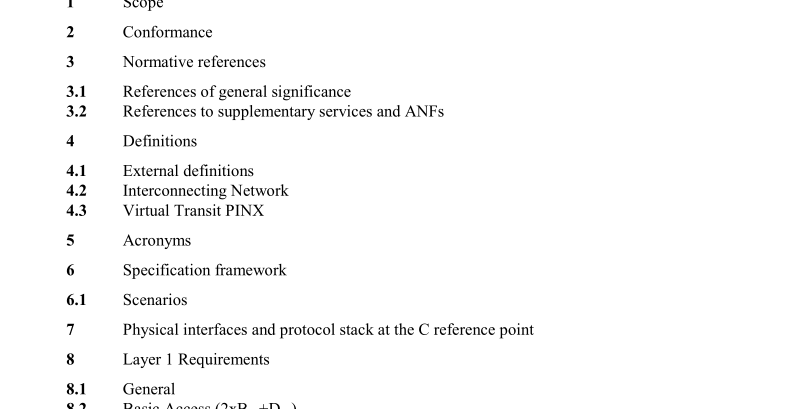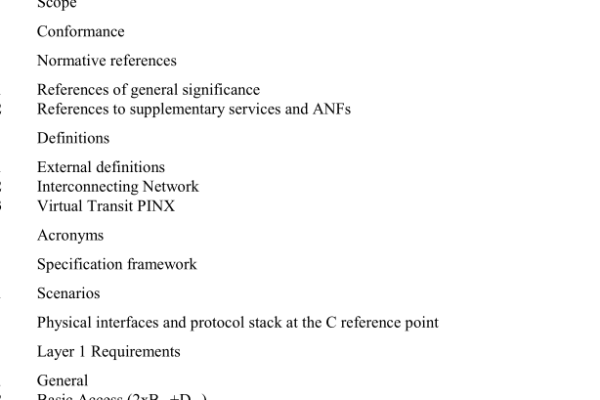ISO IEC 20161:2001 pdf download – Information technology — Telecommunications and information exchange between systems — Private Integrated Services Network — Use of QSIG at the C reference point between a PINX and an Interconnecting Network.
1 Scope This International Standard specifies the combination of base standards, together with the selection of appropriate options and parameter values, necessary to specify how QSIG / PSS1 can be used to provide digital signalling capabilities at interfaces at the C reference point between a Private Integrated services Network eXchange (PINX) and an Interconnecting Network (ICN) to permit interoperability between equipment from different vendors and different public or private service providers. NOTE 1 – PINX in the sense of this International Standard is used in the meaning of a PINX directly attached to the ICN. This International Standard is applicable to attached PINXs and Interconnecting Networks (ICN). This International Standard identifies the necessary or optional employment of particular functions, procedures and services when provided: – physical and electrical characteristics (physical layer) of the interfaces to the transmission systems to be employed; – data link layer procedures; – network layer procedures; and – supplementary services and additional network features to meet specific corporate network user requirements. This International Standard states requirements upon attached PINXs and Interconnecting Network (ICN) implementations in order to achieve interoperability between equipment in PISNs serving as Corporate telecommunication Networks (CNs). NOTE 2 – Implementation of this International Standard does not preclude a manufacturer from offering other means of interconnection. It also does not preclude a VPN service provider to offer basic call communications between a PINX and other networks like PSTN or ISDN. ISO/IEC TR 14475 specifies various access arrangements between a PINX and a public network where reference points C and T reside either at a single or at separate interfaces. The scope of this International Standard is limited to cover the C reference point aspects at a separate interface. The current version of this International Standard does not intend to specify any gateway or end PINX requirements for the ICN side of the interface. Therefore it typically uses the term “virtual transit PINX” instead of Interconnecting Network (ICN). 2 Conformance A system conforms to this International Standard if it correctly performs all the mandatory capabilities defined in the requirement list (RL) (annex A) and the profile specific ICS (annex B). NOTE 3 – For the purpose of this International Standard capabilities marked as optional in the base standards may be mandatory or excluded. 3 Normative references The following normative documents contain provisions which, through reference in this text, constitute provisions of this International Standard. For dated references, subsequent amendments to, or revisions of, any of these publications do not apply. However, parties to agreements based on this International Standard are encouraged to investigate the possibility of applying the most recent editions of the normative documents indicated below. For undated references, the latest edition of the normative document referred to applies. Members of ISO and IEC maintain registers of currently valid International Standards.
ISO IEC 20161:2001 pdf download – Information technology — Telecommunications and information exchange between systems — Private Integrated Services Network — Use of QSIG at the C reference point between a PINX and an Interconnecting Network






